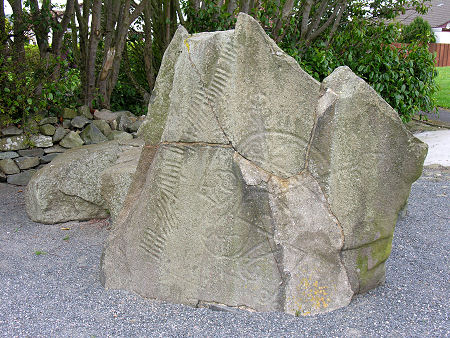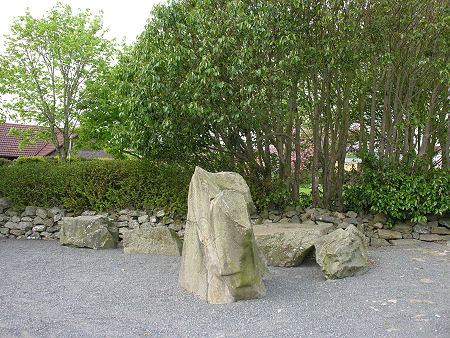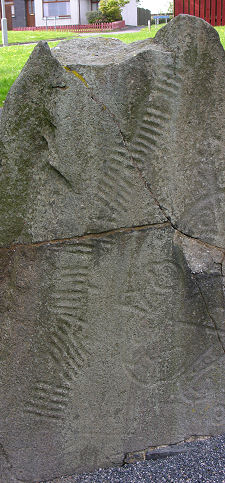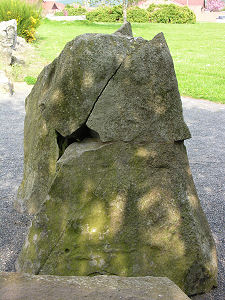 The Brandsbutt Stone |
Brown tourist signs on roads in the northern end of Inverurie leads you though a housing estate to the small open area surrounding the Brandsbutt Pictish Symbol Stone, a fascinating survivor now found, thanks to the modern growth of Inverurie, in a very unexpected location.
The stone carries on its front face a series of Pictish symbols. These include an "V-rod" and crescent, above a "Z-rod" and serpent ("V-rod" and "Z-rod" are simply names given to common patterns produced by Pictish artists). The snake comes complete with carved scales that are still visible today.
Perhaps the most unusual feature of the Brandsbutt Stone is an inscription that runs down vertically up the length of the stone to the left of the symbols. This is in Ogham, a language sometimes referred to as the "Celtic Tree Alphabet" in which individual letters are signified by a series of horizontal lines leading from, or crossing, a vertical line.
Some 400 Ogham inscriptions have been found in total, mostly in Ireland and in the Celtic extremities of western Great Britain. The one carried by the Brandsbutt Stone is therefore a relatively rare example of an Ogham inscription from eastern Scotland. In common with many others, however, it seems to represent the name of an individual. In this case the letters spell out "IRATADDOARENS". This is thought to be a reference to Eddarrnon, a variant on the name of a local saint, St Ethernanus.
If you take a look at the rear of the Brandsbutt Stone, you can see that at some point it has been broken into a number of pieces. These turned up as part of a field boundary, and the stone was subsequently reassembled.
Less fortunate has been a stone circle of 12 or 13 stones that once occupied the grassy area next to the stone. This seems to have been deliberately destroyed at some time (perhaps when the Brandsbutt Stone was itself broken up?) and nothing remains of it beyond a circle marked out in modern times on the grass and, possibly, some of the stones lying near the Brandsbutt Stone or incorporated into the nearby wall.
It seems entirely coincidental that the Brandsbutt Stone and the vanished stone circle should have been located so closely together.
 Broader View, Possibly Including One or More Stones from the Stone Circle |

|
|
|
Visitor InformationView Location on MapGrid Ref: NJ 758 225 www.historicenvironment.scot HES: Stone Web Page What3Words Location: ///banter.conspire.hosts |
 The Ogham Inscription |

